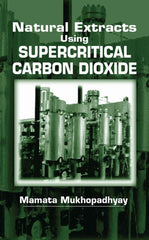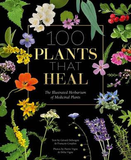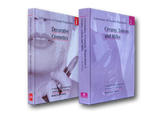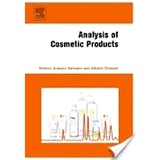Natural Extracts using SUPERCRITICAL CARBON DIOXIDE By Mamata Mukhopadhyay (IIT Mumbai)
Reprinted in India (c) 2016,
June 27, 2000 by CRC Press
Reference - 360 Pages
Features
Details the new products, their attributes, and their characteristics for end users
Shows that supercritical extraction using carbon dioxide does not cause pollution or disposal problems
Describes how supercritical CO2 extraction facilitates the recovery of bioactive thermo-labile natural molecules
Summary
Synthesizing research from a wide variety of sources, this work offers a convenient guide to a clean, safe, inexpensive, non-toxic, non-polluting solvent that performs better than most conventional solvents. Natural Extracts Using Supercritical Carbon Dioxide reviews recent development in the technology and its applications to the food, flavor, fragrance, and pharmaceutical industries. It outlines the many advantages the method has over traditional methods like steam distillation, solvent extraction, and molecular distillation and it supports the popular trend toward the use of natural products in these industries
Table of Contents
Chapter 1
INTRODUCTION
Importance of Nature Cure
Naturopathy
Natural Extracts
CO2 as an SCF Solvent
SCFE Process
SCFE Applications
References
Figure Captions - Chapter 1
Figures 1.1 - 1.3
Chapter 2
FUNDAMENTALS OF SUPERCRITICAL FLUIDS AND PHASE EQUILIBRIA
Process Schemes and Parameters in SCFE
Thermodynamics of SCF State
Variability of Density with P and T
Addition of Cosolvent to SCF Solvent
Solubility Behavior in SCF Solvent
Solubility Isotherms and Cross Over Phenomena
Solubility Isobars
Pressure and Temperature Effects
Solvent Capacity and Selectivity
Cosolvent Effects
SCF Phase Equilibrium Behavior
Liquid-Fluid Phase Equilibria
Solid-Fluid Phase Equilibria
Polymer-Fluid Phase Equilibria
Thermodynamic Modelling
The Equation of State Approach
Solid-Fluid Equilibrium Calculations
Mixing Rules
CS and GC Methods
Solubility Predictions of Solid from Pure Components Properties
Liquid-Fluid Equilibrium Calculations Mixing Rules
Regression of Binary Adjustable Parameters
Prediction of Multicomponent Data from Binary Interaction Constants
Prediction of Phase Boundaries
Mixture Critical Point Calculations
Multiphase (L-L-V) Calculations
Solubility Predictions Using Solvent-Cluster Interaction Model
Solubility Calculations from Correlations
Selectivity of Natural Molecules from Pure Component Solubilities
Thermophysical Properties of CO2 Nomenclature
References
Figure Captions - Chapter 2
Figures 2.1 - 2.27 (b)
Chapter 3
FUNDAMENTAL TRANSPORT PROCESES IN SUPERCRITICAL FLUID EXTRACTION
Transport Properties of SCFs
Viscosity
Diffusivity
Thermal Conductivity
Interfacial Tension
Mass Transfer Behavior
SCFE From Solid Feed
Mechanism of Transport from Solids
Stages of Extraction from Different Natural Materials
SCFF from Liquid Feed
Fractionation of Liquids by SFC
Mass Transfer Modelling For SCFE from Solids
Process Parameters
Mass Transfer Coefficients
Effect of Axial Dispersion and Convective Flows
Shrinking Core Leaching Model
Heat Transfer in SCFs
Heat Transfer Coefficients
Effects of Free Convective Flow
Heat Transfer Coefficient for Two Phase Flow
Heat Exchanger Specifications
Nomenclature
References
Figure Captions - Chapter 3
Figures 3.1(a) - 3.16
Chapter 4
FLAVOR AND FRAGRANCE EXTRACTS
Market Demand
Natural Essential Oils
Methods of Recovery of Natural Essential Oils
Steam Distillation
Maceration
Enfleurage
Cold Expression
Extraction with Volatile Organic Solvents
Choice of Solvents
Purification of Crude Extract
Vacuum Distillation
Molecular Distillation
Liquid-Liquid Fractionation
Supercritical CO2 Extraction
Commercial Advantage
SC CO2 Extracted Floral Fragrance
Jasmine Fragrance
Rose Fragrance
Bitter Orange Flower Fragrance
Lavender Inflorescence Fragrance
Marigold Fragrance
Sandalwood Fragrance
Vetiver Fragrance
References
Figure Captions - Chapter 4
Figures 4.1 - 4.7(b)
Chapter 5
FRUIT EXTRACTS
Importance of Recovery
Citrus Oil Recovery During Juice Extraction
Flavoring Components in Fruits
Stability and Quality
CO2 Extraction Processes
Deterpenation of Citrus Oil by SC CO2
Dealcoholation of Fruit Juice by SC CO2
Enzyme Inactivation and Sterilization by +SC CO2
References
Figure Captions - Chapter 5
Figures 5.1 - 5.6
Chapter 6
SPICE EXTRACTS
Importance of Recovery
Classification of Spices
Therapeutic Properties of Spices
Spice Constituents
Production of Spice Extracts
SC CO2 Extraction and Fractionation
Celery Seeds
Red Chili
Paprika
Ginger
Nutmeg
Pepper
Vanilla
Cardamom
Fennel, Caraway and Coriander
Garlic
Cinnamon
Market Trends
References
Figure Captions - Chapter 6
Figure 6.1
Chapter 7
HERBAL EXTRACTS
Importance of Recovery
Herbal Remedies
Recovery Methods
Antioxidative and Antimicrobial Constituents
Anti-inflammatory Constituents
Anti-Cancerous Alkaloids
Anti-Carcinogenic Polyphenols
Medicinal Constituents of Tea Extract
Fat Regulating Agent
Therapeutic Oils and Fatty Acids
References
Chapter 8
NATURAL ANTIOXIDANTS
Importance of Recovery
Classification
Botanicals with Antioxidative Activity
Tocopherols as Antioxidants
Recovery by SC CO2
Spice and Herbal Extracts as Antioxidants
Recovery by SC CO2
Plant Leaf Extracts as Antioxidants
Flavonoids
Recovery of Flavonoids
Carotenoids as Antioxidants
Recovery of ? Carotene by SC CO2
Solubility of Antioxidants in SC CO2
References
Figure Captions
- Chapter 9
NATURAL FOOD COLORS
Carotenoids as Food Colors
Recovery of Carotenoids by SC CO2
Grass
Orange Peel
Turmeric
Paprika
Red Chili
Carrot
Marigold Flowers
Annatto
Other Natural Colors
Anthocyanins as Food Colors
Classification of Anthocyanins
Recovery of Anthocyanins
Commercial Anthocyanin-based Food Colors
Betacyanins
References
Figure Captions -
Chapter 10
PLANT AND ANIMAL LIPIDS
Importance of Recovery
Recovery Methods
Separation of FFA from Vegetable Oil by SC CO2
Fractionation of PUFA from Animal Lipids
Refining and Deodorisation of Vegetable Oil
Fractionation of Glycerides
Extraction of Oil from Oil Bearing Materials
Sunflower Oil
Corn Germ Oil
Soybean Oil
Olive Husk Oil
Grape Seed Oil
Animal Lipids
Deoiling of Lecithin by SC CO2
Soya Phospholipids
Oat Lecithin
Canola Lecithin
PC from Deoiled Cottonseed
PC from Egg Yolk
Dilipidation and Decholesterification of Food
Butter
Egg Yolk Powder
Fish and Meat Muscles
References
Figure Captions
- Chapter 11
NATURAL PESTICIDES
Importance of Recovery
Bioactivity of Neem
Neem Based Pesticides
Azadirachtin-based Formulations
Commercial Production
Recovery of Azadirachtin from Neem Kernel
Conventional Processes
Supercritical CO2 Extraction
Pyrethrum Based Pesticides
Recovery of Pyrethrins
Nicotine Based Pesticides
Reovery of Nicotine by SC CO2
References
APPENDICES
Thermophysical Properties of Carbon Dioxide
Definitions of Fatty Acids and Their Compositions in Various Oils
Some Statistics on Major Vegetable Oils and Oilseeds
INDEX


















